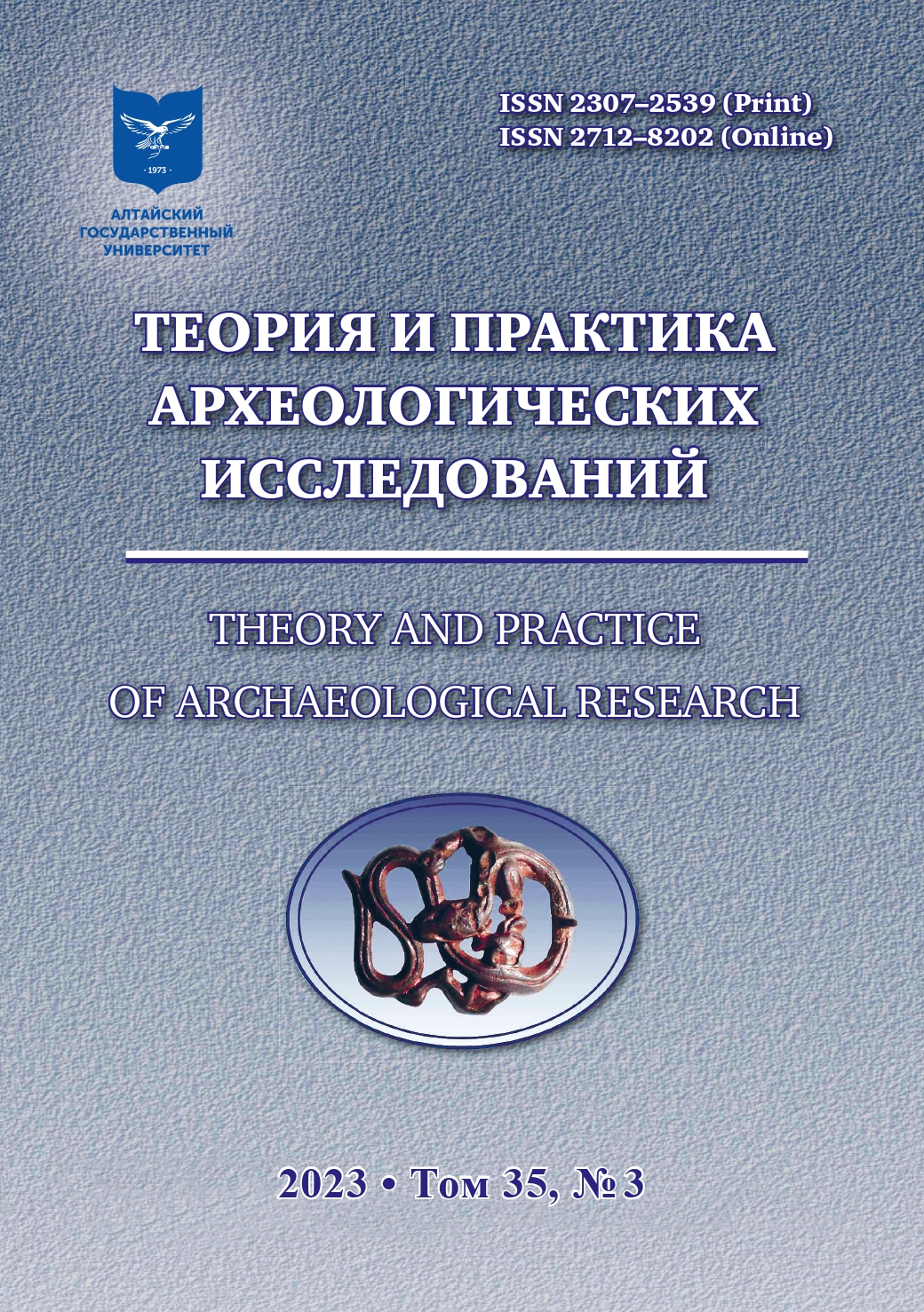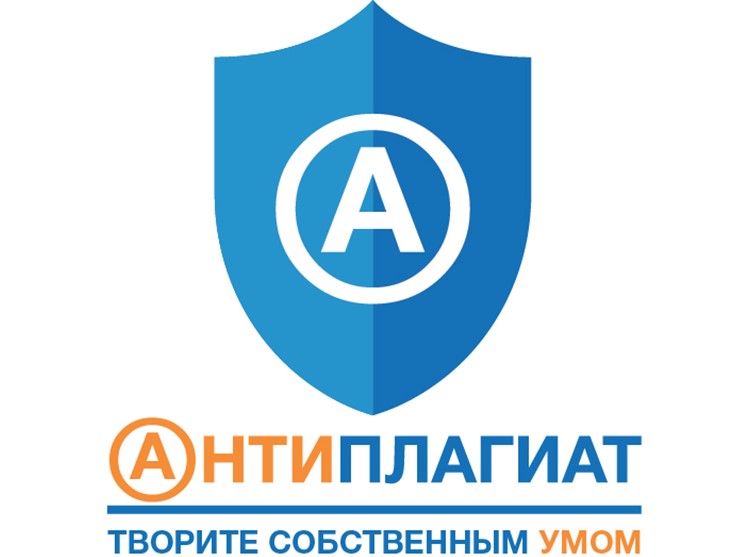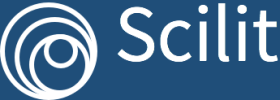TECHNOLOGY OF COMPUTER RECONSTRUCTION OF ARCHAEOLOGICAL FINDS, SIMILAR TO OBJECTS OF ROTATION (ON THE EXAMPLE OF A CERAMIC VESSEL)
Abstract
The article proposes the technology of computer reconstruction of the most probable form of archaeological finds, if their shape is similar to objects of rotation. Reconstruction is carried out on a virtual 3D model — a digital copy of a real object obtained by photogrammetry. For reconstruction, it is enough to have a small area of a real object with well-defined radii of curvature. The smaller the plot, the more variants of the restored forms will be and the more they will differ from each other. The restored parts can be printed on a 3D printer and complement the existing object.
This technology can help the researcher in reconstruction and in assessing the adequacy and geometric correctness of the products, he is restoring. This is especially important when a large volume of the reconstruction object is lost, when the restorer does not see the full geometry of the object.
The proposed method is a special case of the method of mathematical modeling, the purpose of which is not to replace the experience of a specialist, but to provide him with a tool that allows him to delve more deeply into the essence of the studied phenomena.
Downloads
Metrics
References
Avdeev A.G., Svoysky Yu.M., Romanenko E.V. The Study of Epigraphic Sites by the Method of Contactless Three-Dimensional Modeling Followed by Mathematical Visualization of the Relief of the Surface of the Polygonal Model. In: XVI Tikhomirovsky Local History Readings. To the 100th Anniversary of the Revolutions in Russia. Yaroslavl : Jaroslavskij gosudarstvennyj istoriko-arhitekturnyj i hudozhestvennyj muzej-zapovednik, 2019. P. 135–152. (In Russ.)
Zaitsev A.V., Romanenko E.V., Svoiskiy Yu.M., Stoyanov R.V., Gorskaya O.V., Ivanchik A.I. Application of Three-Dimensional Modeling in the Documentation of Ceramics: Individual and Mass Approaches. In: Archaeology and Geoinformatics. Moscow : IA RAN, 2021. P. 42–43. (In Russ.)
Malkov F.S., Kharinsky A.V. Reconstruction of Small Missing Fragments of Ceramic Vessels Using Virtual Reconstruction and 3D Printing Methods. In: Virtual Archaeology (from the air, on the ground, under water and in a museum). St. Petersburg : Gosudarstvennyj Ermitazh, 2018. P. 109–114. (In Russ.)
Samsonov O.V., Tarasov Yu.E. Without Plazing Production of Aviation Equipment: Problems and Prospects. SAPR i Grafika = CAD and Graphics. 2000;9:33–38. (In Russ.)
Svoysky Yu.M., Romanenko E.V., Khlopachev G.A., Polkovnikova M.E. Three-Dimensional Modeling in the Study of Geometric Images in the Art of Small Forms of the Upper Paleolithic and Mesolithic of Eastern Europe. Camera praehistorica. 2020;2(5):8–24. (In Russ.)
Svoysky Yu.M., Romanenko E.V., Ziganshina A.A., Tishkin A.A. The Use of Modern Digital Technologies for Documenting and Comprehensive Study of “Deer” Stones Stored in Museums of Russia. In: Ancient Cultures of Mongolia, Southern Siberia and Northern China. Abakan : IIMK RAN, 2021. P. 131–136. (In Russ.)
Singatulin R.A. Photogrammetric Technologies in Archaeology (a brief historical essay). Istoricheskie, filosofskie, politicheskie i yuridicheskie nauki, kul’turologiya i iskusstvovedenie. Voprosy teorii i praktiki = Historical, Philosophical, Political and Legal Sciences, Cultural Studies and Art Criticism. Questions of Theory and Practice. 2013;3:148–152. (In Russ.)
Tishkin A.A., Bondarenko S.Yu., Mu Ts. Possibilities of Computer Reconstruction of a Broken Ceramic Vessel. In: Virtual Archaeology. Revealing the Past, Enriching the Present and Shaping the Future: Electronic Edition. Krasnoyarsk : Sibirskij federal’nyj universitet, 2021. P. 54–61. (In Russ.)
Sapirstein P., Murray S. Establishing Best Practices for Photogrammetric Recording During Archaeological Fieldwork. Journal of Field Archaeology. 2017;42(4):337–350. DOI: 10.1080/00934690.2017.1338513
Schneider Philip. NURB Curves: A Guide for the Uninitiated. MACTECH. Retrieved 26 September 2014.
Copyright (c) 2023 С.Ю. Бондаренко

This work is licensed under a Creative Commons Attribution 4.0 International License.
Theory and Practice of Archaeological Research is a golden publisher, as we allow self-archiving, but most importantly we are fully transparent about your rights.
Authors may present and discuss their findings ahead of publication: at biological or scientific conferences, on preprint servers, in public databases, and in blogs, wikis, tweets, and other informal communication channels.
Theory and Practice of Archaeological Research allows authors to deposit manuscripts (currently under review or those for intended submission to ABS) in non-commercial, pre-print servers such as ArXiv.
Authors who publish with this journal agree to the following terms:
- Authors retain copyright and grant the journal right of first publication with the work simultaneously licensed under a Creative Commons Attribution License (CC BY 4.0) that allows others to share the work with an acknowledgement of the work's authorship and initial publication in this journal.
- Authors are able to enter into separate, additional contractual arrangements for the non-exclusive distribution of the journal's published version of the work (e.g., post it to an institutional repository or publish it in a book), with an acknowledgement of its initial publication in this journal.
- Authors are permitted and encouraged to post their work online (e.g., in institutional repositories or on their website) prior to and during the submission process, as it can lead to productive exchanges, as well as earlier and greater citation of published work (See The Effect of Open Access).








2.jpg)




